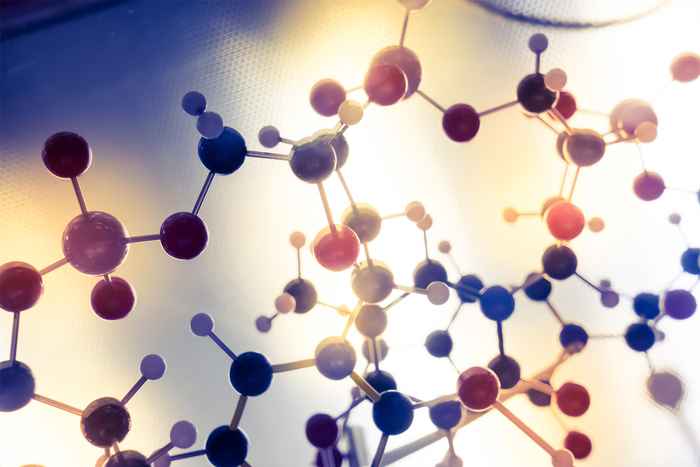Ten research projects selected for MMD hub grants
8 July 2024

The new Molecular and Materials Design (MMD) Technology hub will become a community of scientists and partners that conduct high-tech research in molecules and materials design. The goal is to have potential strong impact on current societal challenges in health care, the energy transition, circularity, or mitigating climate change.
To establish and strengthen MMD-related research, ten projects were chosen to receive grants from 50-150 k€ each. The topics of these projects are related to MMD and aim to make an impact in the Faculty of Science themes Health or Green.
The MMD research projects
Enabling growth-adaptive eXpansion of vascular grafts with PAtieNt-specific auxetic material Design (EXPAND), Dr. Gábor Závodszky and Dr. Corentin Coulais
Patients with pediatric implants typically have years of somatic growth ahead of them after treatment, which can lead to severe adverse effects. The project aims to develop a method for designing vascular grafts that can adapt to patient-specific somatic growth from childhood to adulthood. For this, they use the unique properties of auxetic materials.
Digital development of drug nanocarriers for Alzheimer’s disease, Dr. ir. Ioana Ilie, Prof. dr. Joost Reek and Dr. Carlos Fitzsimons
The development of medicine for Alzheimer's disease is hampered due to the blood-brain barrier. Nanocarriers can be used to get across the barrier, but understanding their properties is challenging. The goal of the project is to create a digital platform for developing drug- and RNA-loaded nanocages targeting Alzheimer's disease. To achieve this, they combine in-vivo experiments with an AI-powered feedback loop.
Predicting and designing olfactory molecules, Prof. dr. Astrid Groot, Prof. dr. Jo Ellis-Monaghan, Dr. Patrick Forré, and Dr. Saer Samanipour
Olfactory interactions are central to countless applications in health and the environment, such as pest control. However, researchers can't classify the stimuli of oders into a single physical parameter. The project aims to discover predictive patterns odors leading to controllable olfactory molecule design.
MAP-RoboBioConjugator: Molecular Analytics Platform for the Robotic BioConjugation chemistry self-optimization processes, Prof. dr. ing. Timothy Noël, Dr. Andrea Gargano, and Dr. Bob Pirok
Peptide and protein-based therapeutics have revolutionized the way we combat diseases. Their activity can be improved using flow chemistry and robotic solutions. However, current analysis methods often take hours per sample with manual data reporting. This project aims to develop a robotic platform to speed up this fine-tuning process to facilitate the discovery of novel therapies.
MMD Theoretical and Technical Supports Workshops, Prof. dr. Jo Ellis-Monaghan, Prof. dr. Peter Bolhuis, and Dr. Alessandra Candian
The project aims to bring first-hand expertise from researchers who develop MMD theory and tools directly to UvA laboratories developing novel molecules and materials. They will do this through thematic workshops with at least one theoretician and one computation/software expert.
Metamaterials designed by AI for safe electric vehicles, Dr. Corentin Coulais and Dr. Jan-Willem van de Meent
To reduce the enormous footprint of steel production, its usage can be optimized in various applications by using mechanical metamaterials. However, the design cycle of these metamaterials is time-consuming. This project aims to develop deep learning methods to accelerate the computational design of metamaterials, enabling new technology for sustainable steel. They will focus on protective casing for car batteries.
Towards a novel therapeutic approach for Parkinson’s disease: Boosting dopamine production and neuronal survival by activating the Gucy2c receptor, Dr. Lars van der Heide, Prof. dr. Dorus Gadella, Dr. ir. Ioana Ilie, and Prof. dr. Peter Vivian Coveney
Doctors usually treat Parkinson’s disease patients with levodopa, which causes side-effects and loses its effectiveness over time. Recently, researchers discovered that targeting the Gucy2c receptor would theoretically have no side-effects and prevent further neurodegeneration. The project aims to develop a ligand targeting Gucy2c by combining rational design with a computational active learning workflow and experimental work.
Optimizing Porous Thin Films for Enhanced Charge Transfer in Solar Energy Conversion Applications, Dr. Sonja Pullen, Dr. Emilia Olsson, and Dr. Bettina Baumgartner
Solar energy could be used for H2 production and CO2 conversion, but the conversion materials currently have low efficiency. Metal-organic frameworks (MOFs) could overcome these limitations, but their synthesis strategies are often irreproducible. The project aims to develop a theoretical framework which they can use to identify optimal MOF structures and develop automated workflows for their synthesis.
Geometric deep learning for late-stage drug discovery, Dr. ir. Bernd Ensing, Dr. Tati Fernández Ibáñez, and Prof. dr. Jaap van Buul
Endothelial cell dysfunction is a key factor in cardiovascular diseases, but there are currently no specific medications approved for treatment. An efficient but also challenging approach to optimize drug candidates is to improve their properties by changing chemical groups. The aim of this project is to further develop the latest geometric learning technologies, which can help to predict possibilities to improve properties of drugs.
Generative AI for designing novel enzymes, Aalt-Jan van Dijk, Francesco Mutti and Erik Bekkers
The 3D structures of proteins such as enzymes determine their function. Recently, generative AI approaches have been proposed which can design novel protein sequences and structures. However, these methods still overlook important aspects of biochemical reality. This project aims to develop generative AI methodology for the design of enzymes, taking into account enzymatic specificity and protein stability. Selected newly proposed enzymes will be tested experimentally. This project involves collaboration between SILS (Aalt-Jan van Dijk), HIMS (Francesco Mutti) and IvI (Erik Bekkers).